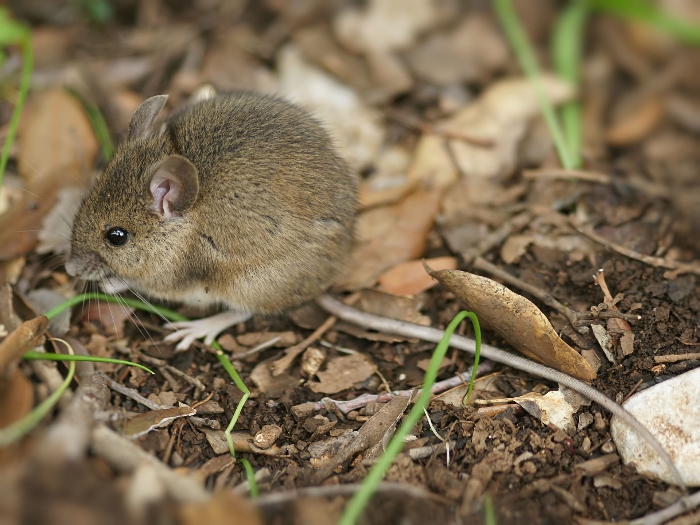Scientific name: Apodemus sylvaticus
Family: Muridae
Appearance: The Wood Mouse is one of Britain’s most abundant mammals. In appearance it is typically mouse-shaped with a long tail, pointed muzzle and large ears. It has dark brown fur with whitish underparts and its eyes are prominent and black. Some animals have a small, isolated, yellowish chest patch. Where present this is always smaller than the yellow neck and chest markings on the Yellow-necked Mouse.
Size: Head and body 6.1-10.3 cm; tail 7.1-9.5 cm
Natural history: Despite its name the Wood Mouse is not restricted to woodland habitats and may be found in gardens, road verges, hedgerows and arable fields as well as on moorland and heathland. Wood Mice are largely nocturnal and live in burrows underground which have round entrances. They do not hibernate but may be less active in cold winters when burrows may be shared with others. During the breeding season they are more territorial. Breeding begins in March and runs through until at least October. Females may have four litters a year – or more in favourable conditions. A litter is made up of 4-7 young which are weaned at around 18 days. They feed on a variety of items including seeds, nuts, berries, snails, insects, centipedes and worms.
Image by © Hans Hillewaert /, CC BY-SA 3.0, https://commons.wikimedia.org/w/index.php?curid=10179776

 English (United Kingdom)
English (United Kingdom)  Czech (Čeština)
Czech (Čeština)  Nederlands (nl-NL)
Nederlands (nl-NL)  Magyar
Magyar  Deutsch (Deutschland)
Deutsch (Deutschland)  Croatian (Hrvatski)
Croatian (Hrvatski)  Polski (PL)
Polski (PL)  Español (España)
Español (España)